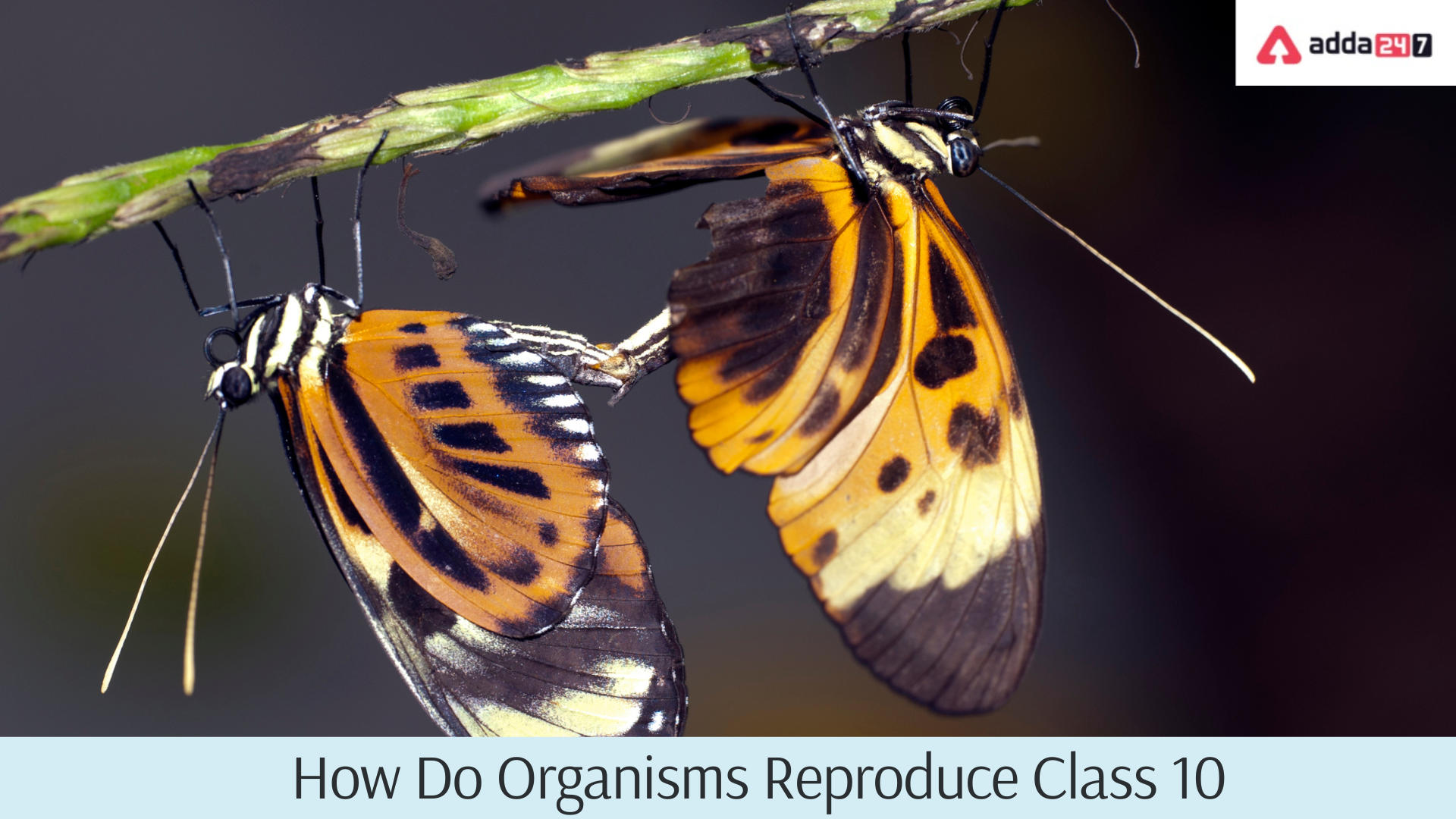Table of Contents
How Do Organisms Reproduce?- Class 10 Notes
Organisms reproduce to continue the chain of life, to pass on its genes which are acquired over millennia. Reproduction is essentially a process by which individuals produce new individuals of the same kind. And this process is very important for the existence of life on earth.
Different organisms reproduce in different ways. Let us have a detailed look at how different organisms reproduce.
How do Organisms Reproduce?
The organisms reproduce in two ways:
- Asexual Reproduction– In this process, only a single parent is involved and no gamete formation takes place.
- Sexual Reproduction– In this process, two parents are involved and gamete formation takes place. Meiosis is an important step in sexual reproduction.
How Do Organisms Reproduce with the help of Asexual Reproduction
Asexual Reproduction is further divided into:
- Fission
- Budding
- Vegetative propagation
- Regeneration
- Spore formation
Fission
This process takes place in unicellular organisms. It is of two types:
- Binary Fission– The organisms reproduce by binary fission only when adequate amounts of food and moisture is available. In this, the mother cell divides into two daughter cells, each containing a nucleus. Amoeba divides by binary fission.
- Multiple Fission– The unicellular organisms reproduce by multiple fission when the conditions are unfavorable with no proper amounts of food, moisture, and temperature. In this, the organism forms a cyst around itself. The nucleus divides, and each daughter nucleus is surrounded by a membrane. When the conditions are favorable again, the cyst dissolves and the daughter nuclei are released, which later develops into an individual cell. Plasmodium and Entamoeba undergo this process.
Join the Adda247 Saksham batch by clicking on this link.
Class 10 students can now join the board exam preparation batch by Adda247 and ace their board exam.
Budding
In this process, an outgrowth is produced from the cell from which a new organism is developed. The developed organism remains attached to the parent organism and detaches only when it matures, leaving behind scar tissue. The process is prominent in yeast and hydra.
Vegetative propagation
In this, a new plant grows from the fragments of the parent plant or a specialized reproductive structure. The offspring are the exact clones of the original plant and there is no mixing of DNA. The common forms of vegetative propagations are grafting, layering, cutting, tuber, tissue culture, etc.
Regeneration
In organisms like Hydra and Planaria we had observed that if they are cut into several pieces, each part grows into a new organism. This is known as regeneration. The specialized cells proliferate and produce a large number of cells. These proliferated cells undergo changes and form different cells and tissues. The sequential process of these changes is known as development.
Spore Formation
During spore formation, the organisms form knob-like structures called a sporangium. This happens during unfavourable conditions in an inadequate supply of moisture and nutrients. When the conditions are favourable, they begin to grow.
The sporangia contain spores that develop into new individuals. The spores are covered by thick walls that protect the spores until they come in contact with moisture and begin to grow.
How Do Organisms Reproduce with the help of Sexual Reproduction
Sexual reproduction is a natural way of reproduction and takes place in all multicellular organisms. This process involves two individuals to produce offspring. In this, the male and the female gametes fuse together and give rise to a new cell.
Sexual Reproduction In Plants
The angiosperms have both the male and female reproductive organs. The pollen grains produce male gametes which fuse with the egg cell of the female. The formation of gametes is known as gametogenesis. The pollen grains are transferred from the anther to the stigma of the flower. These pollens travel through the style and reach the female gametes present in the ovule. The two gametes fuse together and this process is known as fertilization. A zygote is formed which gets converted into an embryo. These give rise to a new seed which gradually turns into a fruit.
Sexual Reproduction In Humans
The testes in males and the ovaries in females are responsible for the production of sperm in males and eggs in females. The sperm fuses with the egg during fertilization, which results in the formation of a zygote and gets implanted in the wall of the uterus. It further divides and forms an embryo. The embryo starts developing week by week seeking nutrition from the mother with the help of the placenta. A new individual finally forms after a period of nine months.
How do organisms Reproduce- Key Points Notes
- Reproduction is the process of producing new individuals of the same kind.
- Organisms reproduce in two ways- asexually and sexually.
- Asexual reproduction does not involve the fusion of male and female gametes. This takes place in bacteria, amoeba, hydra, etc.
- Sexual reproduction involves the fusion of male and female gametes and can be seen in humans and many animals.
- Fission, budding, vegetative propagation, fragmentation are some different types of asexual reproduction. It does not require any reproductive organs.
- Sexual reproduction involves the reproductive organs of male and female.
Found this article helpful?
Reach us by means of visit or call our senior instructor at +91-9625869989 to figure out additional information about the various choices and streams that are open.
We would really see the value in it on the off chance that you could grant a portion of your insight. By utilizing our application, tests, and YouTube class help, you can unwind any vulnerability assuming that you’re centered around getting the best grades Adda247
How Do Organisms Reproduce Class 10 Solutions- QNA
Question 1 How do organisms reproduce?
Ans. The organisms reproduce in two ways-
- Sexually where the fusion of male and female gametes takes place.
- Asexually where the fusion of male and female gametes does not take place.
Question 2 What are the different modes of asexual reproduction?
Ans. The different modes of asexual reproduction include:
- Fission
- Budding
- Fragmentation
- Spore-formation
- Vegetative propagation
Question 3 How does sexual reproduction occur in plants?
Ans. Plants reproduce sexually through pollination. In this process, the pollen from the anther of the flower is transferred to the stigma. The fusion of the male and female gametes takes place. A zygote is then formed which gives rise to an embryo. This leads to the formation of seed which gradually turns into a fruit.



 NTA NEET Exam Date 2025 OUT, Exam Timing...
NTA NEET Exam Date 2025 OUT, Exam Timing...
 NEET Admit Card 2025 Release Date by NTA
NEET Admit Card 2025 Release Date by NTA
 Anna University Result 2025 OUT at coe1....
Anna University Result 2025 OUT at coe1....










